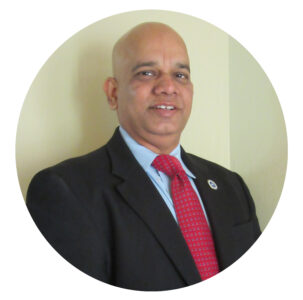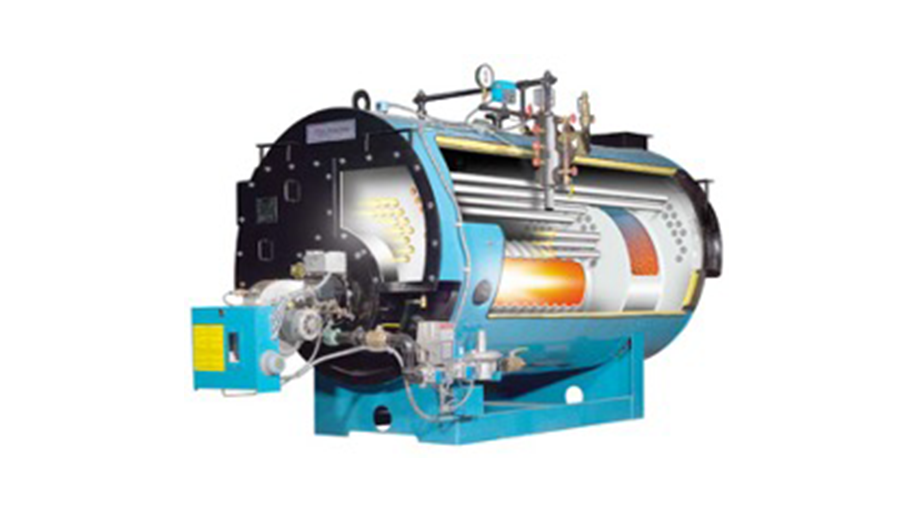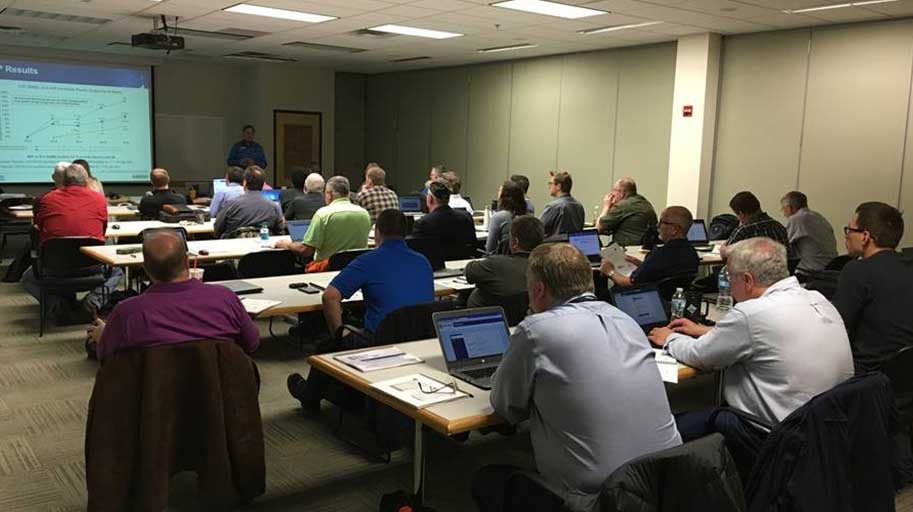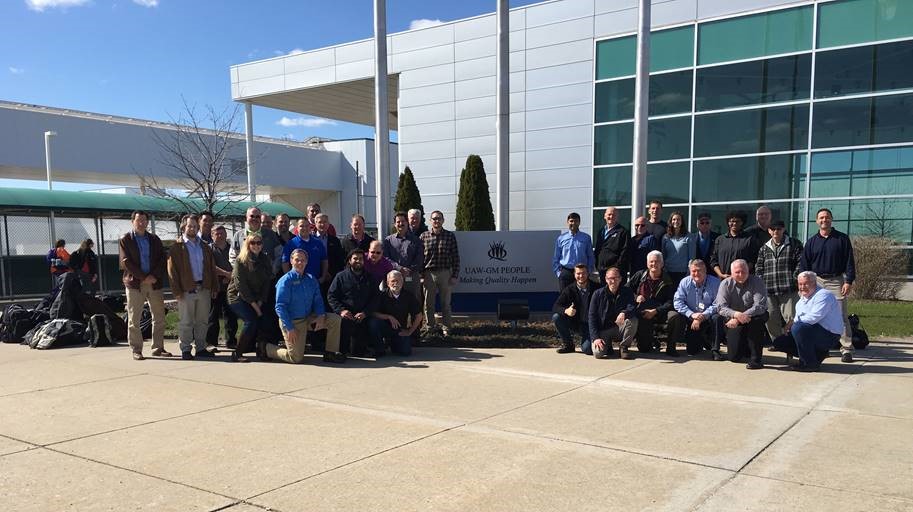INPLTs offered by the U.S. Department of Energy’s Better Plants program are multi-day workshops performed by industry-recognized experts. INPLTs include both classroom and field-based training sessions that train the attendees to identify energy conservation opportunities, quantify savings from those opportunities, and implement projects to realize the energy and cost savings. These training workshops enhance the attendees’ understanding of working principles, knowledge of best practices, and capability of analyzing the energy performance of industrial energy systems. As of May 2022, the Better Plants program has hosted over 140 In-Person INPLTs with about 2,600 participants, helping to identify more than $50 million dollars in energy cost savings opportunities.
Due the challenges created by COVID-19 pandemic, manufacturers throughout the world have been trying to determine how to safely open and operate their manufacturing plants. To minimize the risk of infection, many manufacturers have reduced the number of people allowed into their plants without compromising the production continuity. This makes delivery of INPLTs challenging in the traditional in-person fashion. To address this challenge and continue providing INPLTs during this difficult time, Better Plants program has started to perform Virtual cohort In-Plant Trainings (VINPLTs) on process heating systems, steam systems, ammonia industrial refrigeration systems and wastewater treatment operations.
The Better Plants program will deliver a VINPLT on industrial steam (Steam) systems from October 14 to December 9, 2022. The Steam VINPLT will be performed by industrial experts and Technical Account Managers using online video communication technologies. The Steam VINPLT comprises eight (8) 2.5 -hour online training sessions (2-hours formal training and optional 0.5-hour Q&A) that will be delivered on every Friday (except Nov 25) 10:00 AM – 12:30 PM ET for eight (8) weeks. Participating in this VINPLT is free and open to all the Better Plants program partners.
Participants will be trained on industrial steam system fundamentals and undertaking of a system-specific energy assessment, including hands-on training on the steam system assessment module within the Manufacturing Energy Assessment Software for Utility Reduction (MEASUR) tool. To maximize the benefits from attending VINPLTs, homework assignments will be given to the participants at the end of each session and will be due by the next session. These homework assignments are designed to enhance participants’ understanding of industrial steam systems, as well as to identify and quantify energy savings opportunities. During the last session of the VINPLT, participants are expected to create a summary presentation based on their assessment, present their findings, and share the scrubbed version with DOE.
At the completion of the VINPLT, Professional Development Hours (PDHs) Certificates will be prepared for the attendees on demand basis. Participants are expected to collect measurements/data from their own steam systems, perform an energy assessment, and identify energy efficiency opportunities with the help from the instructors. To collect the assessment data, in some cases, diagnostic equipment will be arranged and shipped to the partners. The Better Plants diagnostic equipment are available on a first come, first serve basis.
Oct 14 to Dec 9, 2022; Every Friday 10:00AM–12:30PM ET (Except Nov 25; 2.0-hour formal training + optional 0.5-hour Q&A)
Week 1 – Industrial Steam Systems Fundamentals and Introduction to SSST; Oct 14, 2022
Industrial Steam systems experts describe the overall process of conducting a Steam VINPLT, explain the fundamentals of industrial steam systems and provide an overview of generation, distribution, end-use (including CHP) and recovery. VINPLT attendees will also be introduced to the Steam System Scoping Tool (SSST).
Week 2 – Focus on Steam System Generation and Introduction to DOE’s MEASUR Tool; Oct 21, 2022
The focus of the session will be on steam system generation – understanding measurements needed to calculate direct and indirect boiler efficiency, estimate the magnitude of specific boiler losses – shell, blowdown, and stack losses. An industrial steam system will be used to demonstrate the calculators available within the MEASUR tool.
Week 3 – Steam System Generation & Cogeneration (CHP); Oct 28, 2022
Training experts will complete all remaining aspects of steam system generation and provide a basic understanding of evaluating cogeneration systems including back-pressure and condensing steam turbines and gas turbines with Heat Recovery Steam Generators (HRSG). Measurements needed and different efficiency metrics will be highlighted.
Week 4 – Steam System Distribution, End-Use & Condensate Recovery; Nov 4, 2022
Training experts will provide an understanding of the steam distribution system, end-use and condensate recovery. VINPLT attendees will complete a baseline model of the example industrial system using the MEASUR tool.
Week 5 – Energy Efficiency Opportunities in the Generation Area; Nov 11, 2022
Training experts will discuss stack heat recovery, excess air combustion control, blowdown energy recovery, shell loss reduction, etc. VINPLT attendees will be able to use the baseline model in MEASUR to do “what-if” analyses and quantify the benefits of each of the individual energy efficiency opportunities.
Week 6 – Energy Efficiency Opportunities in Cogeneration (CHP) Area; Nov 18, 2022
Training experts will discuss energy efficiency improvement and cost savings opportunities with back-pressure and condensing steam turbines. VINPLT attendees will be able to use the baseline model in MEASUR to do “what-if” analyses and quantify the benefits.
Week 7 – Energy Efficiency Opportunities in Distribution, End-use and Condensate Recovery Areas; Dec 2, 2022
Training experts will demonstrate the use of the insulation evaluation software (3EPlus), steam trap management program, improving condensate recovery, low-pressure steam (waste heat) applications, etc. VINPLT attendees will be able to use the baseline model in MEASUR to do “what-if” analyses and quantify the benefits.
Week 8 – Industrial Steam System VINPLT Wrap-up Presentations; Dec 9, 2022
Over the past seven weeks, VINPLT attendees have been provided homework that focused on the attendees building their own steam system model in MEASUR and then quantify applicable energy efficiency opportunities. VINPLT attendees will present and discuss the results from their virtual steam system assessment. VINPLT participants could invite their upper management to attend the wrap-up session. Once completed, VINPLT attendees are given a Certification of Completion from US DOE.

Mr. Riyaz Papar
Mr. Riyaz Papar is a registered Professional Engineer (ME), a Certified Energy Manager and a Fellow of ASME and ASHRAE. He is the CEO of C2A Sustainable Solutions, a company based in The Woodlands, Texas.
Mr. Papar is a US DOE Senior Instructor and a US DOE Qualified Specialist (Steam). Mr. Papar is also an Industrial Heating and Cooling System International Expert at United Nations Industrial Development Organization.
Mr. Papar has spent almost three decades in energy efficiency consulting for thermal systems – steam, cogeneration, waste heat recovery, chilled water and refrigeration. Using a systems approach methodology in thermal systems, he has completed ~150 energy assessments both in the US and internationally. Several of these energy assessments have resulted in implemented projects that have continued to save millions of dollars, valuable energy resources and reduced greenhouse gas emissions world-wide.
Mr. Papar has trained more than 7,500 industry personnel internationally. He has worked as Lead Instructor/Facilitator with multinational government and industrial agencies in South Africa, Vietnam, Thailand, Indonesia, Malaysia, Philippines, China, India, Kazakhstan, Egypt, Myanmar and Mauritius to disseminate this capacity building effort.
Mr. Papar has been an author of more than 50 Technical Publications in Journals, Conference Proceedings & Trade Magazines. Mr. Papar has also been an “Energy Saver” columnist for the Chemical Processing magazine published by PutmanMedia.
Mr. Papar has a Master’s (ME) from the University of Maryland, College Park and a Bachelor’s (ME) from the Indian Institute of Technology, Mumba




